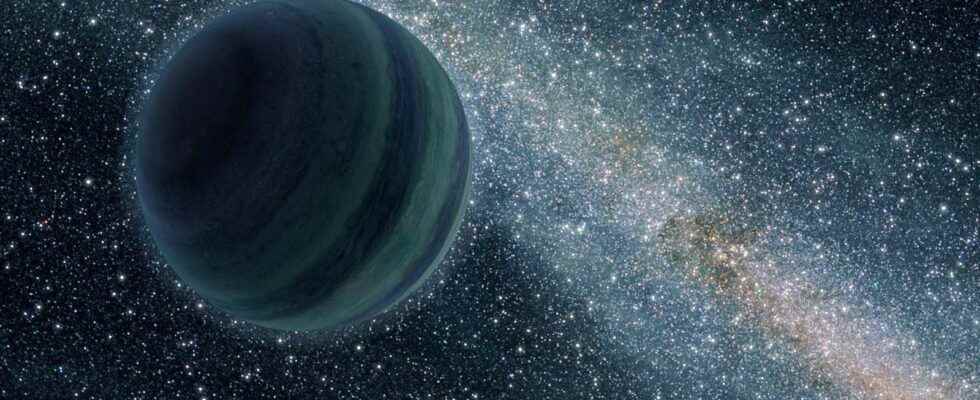Our Galaxythe Milky Waycontains billions of objects free of mass planetary known as “orphan planets”, “wandering planets” or “nomadic planets” because they are not gravitationally linked to any star. These planets therefore have neither rising nor setting of their sun and roam the space around the center of the galaxy. The astronomers consider that they have been expelled from their own star system by other planets or the passage of a nearby star.
Many nomadic planets
The first one wandering planet, called CFBDSIR2149-0403, was flushed out in 2012 by a Franco-Canadian team. A study published in 2011 in the journal Nature estimated that there are 400 billion such free planetary-mass objects in the Milky Way. Orphan planets would therefore be twice as numerous as stars like our Sun! However, this estimate is difficult to corroborate because an orphan planet cannot be detected using conventional observation methods. The scientists therefore resorted to another trick: when the wandering planet passes between a star and the Earth, it acts as a “gravitational micro-lens” which generates a tiny increase in the brightness of the star.
Life on Orphan Planets
Without the warmth of a nearby star, it’s hard to imagine life on such planets, thinks Olivier LaMarleprogram managerastrophysics at CNES. However, the study of Nature estimates that small orphan planets could reach 27°C, provided they are endowed with a atmosphere retaining heat. A temperature that could be favorable to life and the presence of oceans.
You will also be interested
Interested in what you just read?
